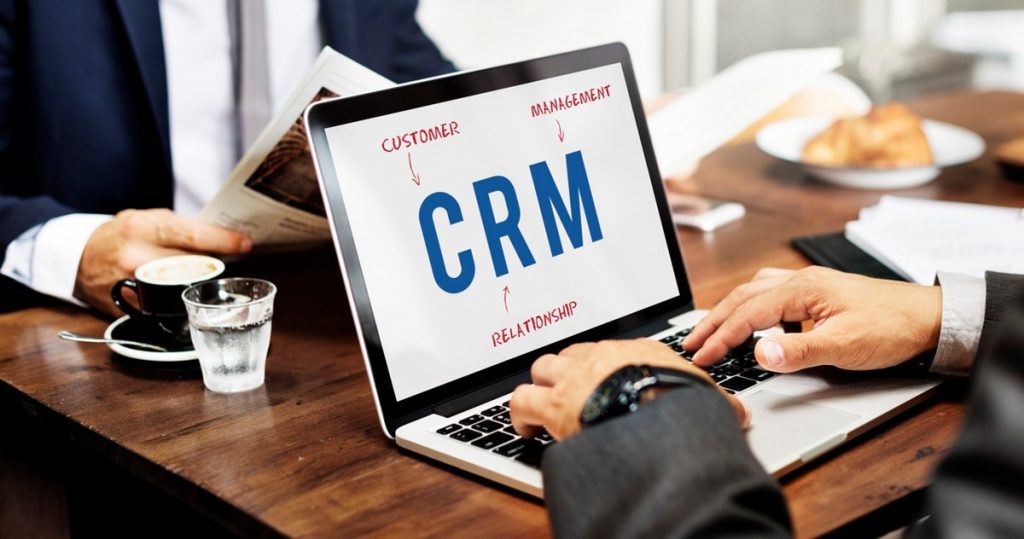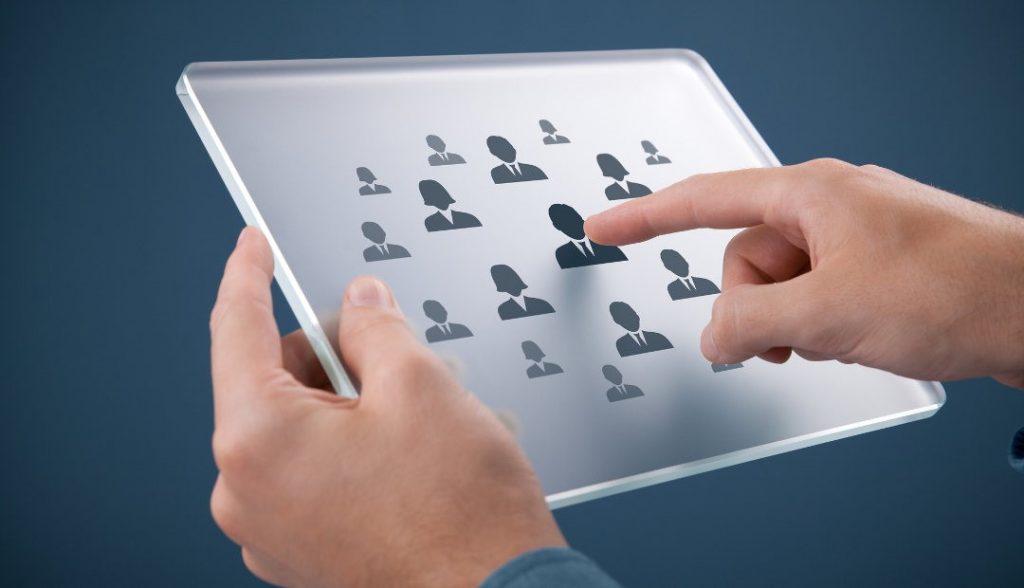If you are looking to boost your customer acquisition and retention, then CRM (also known as customer relationship management) software can definitely help you reach your goals. We know how it is when you’re trying to beef up sales and grow your bottom line. You research ideas, talk to people, maybe even take classes…you hear about things like customer acquisition and retention and CRM, but what do those things really mean?
Customer Acquisition: More than Just Getting Customers
Business jargon can get confusing fast, but let’s discuss what customer acquisition is. Customer acquisition is more than just getting customers. In fact, it’s an entire subset of management that includes various techniques that can be put into play for managing prospective customers and inquiries that are generated through your marketing campaign. For instance, you create a social media marketing campaign. What do you do with your responses? If you have a newsletter sign up on your website, what do you do with your sign ups? What you do with your leads is a major portion of customer acquisition.
There are many, many reasons why customer acquisition is important. Perhaps the most obvious reason you need customer acquisition is to increase your bottom line, but did you know that customer acquisition can also help increase brand awareness? New customers do more than just add to your bottom line, they do so exponentially while also helping to grow and expand your business.
Customer Retention: More than Just keeping Customers
Now, let’s turn to customer retention. Customer retention isn’t just about keeping customers, rather it refers to the ability of a company to keep customers over a period of time. High retention rates are desirable because that means that customers tend to come back time and time again. Retaining customers is going to be a far more cost effective strategy than acquiring new ones.
Statistics show that it is anywhere from five to 25 times less expensive, in fact, to retain customers over acquiring new ones. Plus, it’s easier to establish a relationship with an existing customer. Statistics also show that when you lose a customer, your average loss equates to approximately $243. Another perk of customer retention? Long-term customers tend to spend more money when you keep them aboard. If you want to grow your bottom line, then you are definitely going to want both customer retention and customer acquisition, as one leads to the other.
Both of these strategies share a symbiotic relationship. They need each other to survive, and they work together to do so. Without one, you probably won’t do great with the other. The biggest issue we see companies incur when it comes to customer acquisition and retention is that they have to create and maintain a strategy for keeping these concepts alive. The application of a strategy can be a major challenge in the day to day of any business. You would either need to oversee the tasks yourself, designate someone on your team to do it, or hire someone to take care of your customer acquisition and retention.
All of those ideas cost you in resources, obviously. They mean a sacrifice in time, and they also mean a sacrifice in money. So, what’s the better option?

Enter CRM
CRM is a process by which interactions between you and customers are managed. These interactions can be with past, existing, or potential future customers, but anyone who has had interaction with your company is going to be in your CRM system.
Automated e-mails and texts, for instance, are a part of CRM. Appointment scheduling is another component of CRM. Not only is communication between customers and your company a major portion of CRM, but perhaps the biggest factor is that your various departments in areas such as marketing, sales, and service have direct access to your contacts’ information. Each department can see and monitor interactions to yield the best outcome.
Instead of hiring someone to carry out actions needed for customer acquisition and retention, could you take advantage of the automation and integration of CRM? In this article, we’re going to take a further look into how you can use CRM for customer acquisition and retention.

How to Use CRM for Customer Retention and Acquisition
First, let’s take a look at top tips for using CRM when it comes to aiding in your customer retention and customer acquisition strategy:
1. Create Loyalty Programs
CRM software can be used for a long list of things, but perhaps one of the most crucial to your customer retention strategy would be the creation of a loyalty program. A loyalty program is a specific part of a marketing strategy that is designed to keep customers engaged and shopping at your business.
Retailers see major retention benefits from the creation and implementation of a loyalty program. In fact, the statistics might just shock you. For instance, companies with strong loyalty programs report that their revenues are growing 2.5 times faster than competitors, and members who are part of some of the strongest loyalty programs are over 75% more likely to choose that brand versus the competition. As part of customer retention, 65% of businesses report they use loyalty programs as a way to attract new customers. Over 20% of companies are using loyalty programs to re-engage customers. Whether you’re looking solely at customer retention or acquisition – or even both – a loyalty program is a great way to go.
CRM software can be used to dissect your demographic. Once you create a list of your most profitable customer using CRM, then you can let those customers know about rewards and incentives so they come back time and time again.
2. Define Your Target Audience
Do you know who your target audience is? If you’ve tried to sift through data to create analytics of your own, then you’ve probably seen for yourself just how difficult the task can be. For one, it takes an immense amount of time, and then if you want to save yourself time, you’d need to hire someone.
CRM can take out the stress and help you get to know your best audience. CRM can automatically and seamlessly take all the data from your sales team and help you define your target audience. Instead of relying on predictions, you can trust solid data. Then, your company can adjust as needed in areas of sales and marketing. When you can approach the right audience, you’re going to save time and find that you grow your bottom line faster.
If you want to get the most from customer acquisition, then you’ve got to be able to define your target audience, and you might find that CRM is just what you need to get the job done without sacrificing time and resources.
3. Use CRM to Assess Performance
Are your marketing campaigns hitting the nail on the head? If you’re finding the performance of your marketing campaigns to be an area of concern, then you might be happy to know that you can actually use CRM to assess the performance of your marketing campaigns and even your sales team.
CRM software typically features dashboards where you can see real time analytics based on data from various sources, including your marketing campaigns. What areas do you consider key metrics? Keep an eye on these with CRM. These key areas can be monitored to make changes as needed to ensure the overall success of your campaigns and your sales teams. It can be useful to offer your sales team incentives based on key metrics.
Altogether, those strategies can help boost your performance in marketing and sales, and when you do this, then you all but guarantee that you are going to start seeing a higher bottom line.
4. Find Out the Answers to Pre-Sales Questions
CRM is a wonderful tool for reaching out to customers. It can be done in a way that feels personal to the customer and helps them feel important, but it can be done as part of automation so that you don’t have to sacrifice time or resources to build the relationship. With CRM, your sales team can quickly identify the ways in which a customer might use a product or a service. These concepts can be addressed and then incorporated into your company’s e-mail or text messages. It’s just another smart way to keep in touch with customers during the customer life cycle. If you have a subset of customers in the purchasing process, then this data can help you get closer to making the deal.
CRM provides a wonderful customer acquisition and retention tool that’s automated, easy, and effective at building relationships while also implementing automation. Customers want to build relationships, and by doing so, you can not only boost your acquisition, but you can also ensure a greater level of customer retention.

5. Touch Base With Last Chance Customers
There are many ways to kill customer retention, and some of those things really can’t be helped. 8 out of ten customers will leave if they have a poor customer experience, so obviously providing the best customer service is imperative. One of the ways you can do this is through CRM, which continuously works to build relationships with your customers.
If you see that customers are leaving, you’ll need to do a few things to try to stop them from doing so. The first thing is to look for trends. Why are your customers leaving? Even if a small amount, is there a pattern? Look to the data in your CRM to see if you can find clues. Lower engagement can show you that customers are getting ready to leave, and when you see trends such as this, then you know you’ve got to take action. The action you take should probably also hinge upon the data you’ve collected with CRM. What causes high engagement? What causes low engagement? Use high engagement action to counteract low engagement and try to prevent your last chance customers from leaving.
6. Give Customers A World-Class Experience
Customers love concierge experiences, no matter the product or service they are interested in. If you can go the extra mile, then you can likely secure the customer and count on them being a part of your retention. 8 out of ten Americans say that friendly service and knowledgeable help are among the top factors of having a great customer experience.
So, how can you provide a truly concierge style experience for your customers, aside from staying in constant contact with them? The good news is that you won’t have to spend much time doing it, and that it will be effective. With CRM, you can stay in touch with your customers with automation at your side.
Automation is your friend. You can send e-mails customized with your customer’s name, send text messages wishing them happy birthday, and everything in between. When you can put into play strategies like these, your customers will be above and beyond happy with your brand!
7. Added Personalized Touches Increase Acquisition and Retention
Following the last point, personalization is a huge part of customer satisfaction. No customer wants to feel like they are just another number. They want to feel wanted and meaningful to your brand. That’s where CRM comes into play.
It’s so easy to use CRM to build customized e-mails with customers’ names built right into them. CRM makes it so easy to do it, too, and you’ll be surprised at how well your customer acquisition and retention goes when you’ve put this strategy into play. Consumers want to feel special, and by customizing profiles, messages, and more for them, then you are guaranteeing their satisfaction. CRM makes this easy and cost-effective to do.
Not only that, but you can also create customized message per demographic, which is a great way to target specific parts of your audience. Not only can you use a customer’s name, but you can also use content relating to products and services this demographic was interested in.
Personalized recommendations can also be a wonderful way to excite your customers. The sky is the limit when using CRM for customer acquisition and retention.
8. Build a Better Customer Relationship
We have talked a great deal about building great customer relationships, but why is this so important? If you are serious about selling a product or service, then you need to get serious about building relationships with your customers and prospects. Statistics show that 90% of customers would pay more for a better quality customer experience. CRM gives you the tools you need to do it.
You can build those relationships with your customers that yield better customer service. You can build one-on-one relationships with customers without the need for asking them for the same information over and over again each time you come in contact. Another plus? CRM isn’t just great for the direct communication component of relationship building. In fact, CRM can be vital for building up sales because your sales team can now follow every step along the way. Statistics tell us that 74% of businesses use CRM to improve customer relationships, and that a whopping 65% of sales teams who use CRM reach their sales goals.
Building a better relationship with your customers is how you can reach your goals.

9. See the Customer Journey All In One Place
To really understand the actions of your customers and to grasp the full scope of your customer retention, you really need to be able to see the full customer journey. Without CRM software up and running, seeing the customer journey could be pretty messy. In fact, there’s virtually no other way to clearly see the customer journey if you aren’t using CRM. Clearly, CRM is pretty important here, but why?
Well, CRM can map the entire customer’s journey from the initial contact to engagement to conversion and beyond. Will CRM help you save the customer this time? Maybe, maybe not. It can, however, be useful for mapping the customer journey and working up your future customers. Along the way, CRM can help you identify your strengths and weaknesses so that you can make revisions to your marketing campaign and thus get the most from customer retention.
Growing customer retention should be your priority. In fact, statistics show that a 2% increase in customer retention is the same for profit margins as cutting costs by 10%. There’s some food for thought.
10. Create Your Own Offers And Grow Your Prospects
What better way to attract and engage prospects than by offering special offers? CRM software can be used to create your very own offers, discounts, deals, and promotions, and then you can even use CRM to help promote your promotions. For instance, social media promotions have proven highly effective in helping companies grow their bottom lines. Even if you don’t get the sale right then, you could potentially acquire a future customer or retain and old one.
Buy one get one sales, free offers, and everything in between can be used as a way to lure new and old customers back, and CRM plays an important role here because it can help you automate and manage your promotions every step of the way. You don’t have to worry about spending money on an employee to do the work, nor do you have to spend the time on it yourself. Instead, you can sit back and let CRM’s automation carry out your promotions on your behalf while you reap the rewards.
11. Put A Service Level Agreement In Place
A service level agreement has been shown to increase customer retention time after time. Through a service level agreement (SLA), you set up a commitment between yourself and the customer. Areas such as quality, responsibilities on both sides, and availability are laid out in plain terms with the intent of increasing transparency and addressing concerns before going forward doing business together.
When most of us think of a contract, we hear a negative connotation in terms of customer retention, but the truth is that SLAs are good for business. Why? Well, customers like transparency, and they like to know that their every concern is being addressed.
One of the biggest problems business face is creating a SLA and getting it distributed evenly to customers every single time. This is an area in which CRM can absolutely help. Thanks to CRM automation, you can have new customers e-mailed SLAs without missing a beat. Your customers can see their SLAs without having to wait on you or anyone else to forward them, and they can even sign online. Then, you receive the SLA, and thanks to cloud storage offered by CRM, you can digitally save your documents without worrying.
Save time and space while making sure that your SLAs are squared away and check out CRM today.
12. Gauge What Your Customers Want With CRM
One of the most amazing things about CRM is that you can use it to capture the pulse of what your customers want. Plus, you can do it simply by asking your customers for their feedback. This can be achieved through your CRM software through a variety of tools, including polls, questionnaires, surveys, and more.
By simply asking questions, you can get a clear picture of what your customers want, what they like, what they don’t like, and what they think in general. If something is going in the wrong direction, these tools can help you get back on track. Not only can this feedback be used in your hands, but it can be used by other departments. Sales, marketing, and service, can all take advantage of this kind of information to perfect your services and products to yield higher customer acquisition and customer retention.
When you use CRM, you can better gauge what your customers want with just a few tools at your fingertips.

13. Segment Your Data With CRM
Yes, CRM is amazing for gathering data and helping you put it to use, but one of the best ways it established this is by segmentation. If you are trying to increase your customer retention or customer acquisition, then segmentation is your friend.
Marketing segmentation is a process by which a market is divided into segments based on factors such as behavior, demographic, and geographic location. The biggest difference here is that CRM can accomplish segmentation extremely quickly. It allows you to understand the various groups in your audience, and then you can create profiles or buyer personas. When this is done, you can then deliver personalized messages, build better relationships, send better e-mails, and more. If you want to better retain the customers you have while also attracting new ones, then CRM based marketing segmentation should be a tool in your toolbox.
Once you have those personas in place, then you know what kind of customers you should be looking for, and therefore personas can be used to find other customers just like them.
14. Track All Of Your Communication
CRM is wonderful because it tracks, documents, and analyzes virtually every interaction you have with your customers. Your e-mails, phone calls, meetings, and more are tracked so that you can look back and see what interactions you’ve had while also allowing other team members to jump right in and pick up where you left off or collaborate seamlessly.
CRM tracking means higher close rates and better upsell opportunities. So, if you are looking to beef up your customer acquisition or customer retention, then make sure that you are using CRM to track your communications so that you always know what’s going on.
15. Add New Services and Products
The data and insights you receive from CRM can be used as a way to add new services and products based on direct feedback from customers and prospects. With CRM software in place, you can identify where new services and products can strategically be placed to offer customers exactly what they want as you grow your bottom line.
Adding products and/or services catalog is a breeze. But that’s not the biggest upside a CRM solution can offer you. Using the CRM tools, you can add products and services from your catalog to an opportunity identified through various vaiables from your customer data, maximizing customer engagement and increasing sales in the process.
16. Lower Your Overall Costs
CRM is wonderful because when you use it, you can actually decrease your overall costs because you don’t have to pay extra employees or contractors to assist. Then, you can use this savings to put more into your customer acquisition efforts. From here, you can enjoy greater revenues. For that purpose, you should opt for cloud-based CRM, as it helps you minimizing software acquisition costs, as well as reducing the complexities in implementing software update and add-ons.
CRM might seem like just one simple software that you might be hesitant to put into place for various reasons, but if you do choose to use CRM, then you can expect to see potentially lower overall costs as a result of your investment.

The Bottom Line Means Big Things for the Growth of Your Business
It doesn’t matter whether you are marketing a product or a service, there are a number of things that you’ve got to consider in your marketing and sales strategies. Businesses tend to sway away from outsourcing and try to take care of everything in-house only to be met by a brick wall. You can only dedicate so much of your time to customer acquisition and customer retention. If you try to allocate someone who is already on staff to these tasks, your team will lose productivity. No, you can’t do these things. The key is clearly to keep your team running productively while also finding ways to increase their productivity as you put into place strategies for customer retention and acquisition. The good news is that CRM can help.
CRM is an exceptionally powerful tool that all of your teams can use for some reason or another. It can be used to manage contacts, communications, promotions, and everything in between. Your teams can use CRM to connect, leverage data, manage customer profiles, and more. In terms of your customer acquisition and customer retention goals, CRM can do amazing things.
For instance, CRM can be used to gather meaningful data. This data can be used to define important parameters about prospects and customers while also segmenting your contacts into categories based on demographics, geographical areas, and more. The right CRM can help you create loyalty programs, offers, promotions, and more that are designed to capture the attention of new and existing customers alike. CRM can make every communication meaningful, whether that’s between a team member and a customer or two team members.
CRM can be used to cultivate rich customer relationships that help to grow your business. After all, customer retention is based on relationships and service. CRM can also help you provide an amazing level of customer service to ensure that you have satisfied customers who stay around and also refer new customers to you. It’s more cost-effective to work with existing customers than to continuously look for new ones, and CRM does an exceptional job of making sure you are getting the most from every customer relationship.
With CRM, you can also get a better picture of the customer journey. This process is important for you because you can use the data gleaned to improve your marketing and sales to do a better job of retaining customers.

Choosing the Right CRM
All of the things you have read in this article point to one big thing: CRM is important. While this is true, what’s equally important is that you find the right CRM for you. The difference between the right CRM and the wrong one is astronomical. The wrong CRM, after all, would just be a wasted investment. Statistics tell us that 87% of businesses are using cloud-based CRM platforms today.
CRM software is the biggest software sector of any found the whole world over, and the CRM market is on track to grow to $80 billion by 2025. CRM makes it possible for companies to access valuable data in real-time, and they’re willing to pay for it. This means CRM prices will stay afloat and the market will continue its climb. Choosing the right CRM for you comes down to a variety of factors that will be completely unique to you.
While you might feel that price should be at the top of the list, the price of your CRM platform actually will not be the most important thing to look for. There are free CRM platform options out there, however, it’s evident that quality should come first when you’re looking to boost your customer acquisition and customer retention. With that said, you will need to consider which processes in your business are the most inefficient and how CRM can help. Then, consider who in your company is going to be using your CRM platform. CRM is typically priced per user, so you’ll want to know how many users you will need to subscribe for.
Another option to consider will be whether or not you want an on-premise or off-premise CRM deployment. Cloud solutions are easy and accessible all the time with no on-premise storage requirement necessary. With on-premise solutions, however, you actually own your software and keep all of your data at your location. Obviously there are benefits with both, so the right CRM storage and hosting options are going to depend on what you think is most important or needed for your business.
We’ve talked at great lengths regarding the features you would want to use in terms of CRM and customer acquisition and customer retention, but what about integration? Integration is becoming more and more in-demand when we turn to CRM platforms, so this is something you should definitely consider. If you use third party apps to manage your business or any of the administrative tasks relating to it, then you will want to see if your prospective CRM system supports integration to these apps. Integration is a dream because it make your company’s functions seamless. If you want to get the most from your CRM and the apps you already use, it’s wise to make sure that your new CRM is going to support integrations to these apps!
Another wonderful thing about CRM platforms is that you can very often find industry specific platforms. For instance, if you are in real estate, there are CRM platforms made for the real estate industry. This is obviously critical in customer acquisition and customer retention because it makes everything you do specific to your industry. CRM for your industry is going to make you more productive and efficient, and it could very well help you grow your bottom line faster than ever.
Anytime you look for CRM, be sure to do some research to see what third party users said about their experiences with the platform. Online reviews, testimonials, and videos can be helpful in determining whether or not a CRM platform is truly for you. Learn why clients liked a platform and why they didn’t. If the feedback speaks to you or any of your concerns, then that information could very well help shape the decision you ultimately make in deciding on a CRM platform.
One of the toughest things about getting a new CRM platform is learning how to use it. For this reason, know what kind of training will be available before you sign up. Is on-site training available? If so, does it cost more? Are there options for virtual training? Remote training? Is there an online library, live chat, or some other form of support? You need to be clear on the ways in which you can get help when you need it the most.
Once you find the right CRM, then it’s time to train to learn to use it before rolling it out. You’ll need to make sure you know who on your team will be using the CRM platform and make sure they are trained. Also, how will their roles support customer acquisition and customer retention? What are your goals for your CRM when it comes to customer acquisition and customer retention?
Make sure your team members are on the same page as you. CRM platforms are only a tool, and they are only as good as the people using them. When you and your team are trained properly on the system and have clear goals and objectives in mind, then you can get the most from your CRM platform.

Conclusion
In essence, everything you do in CRM can contribute in some way, shape, or form to your customer retention and customer acquisition goals. Building up a CRM system that’s full of customer profiles is the best CRM system you can have, because once you have contact in your system, then you can start putting into place marketing campaigns and gathering data. Then, data can be analyzed to be used for future purposes, whether that’s modifying marketing campaigns or changing the scope of services and products.
You can send out polls, surveys, and
questionnaires to directly ask your customers what they think and what they
want, and then you can adapt to the responses right away. The real-time feedback
that you get with CRM is truly invaluable, and with companies across the board
seeing massive returns on investment with CRM platforms, you really can’t
afford to not have such a platform in place.
Once you acquire a customer, you can use their data to create profiles that help capture more and more customers, and the data you get can also be used to increase retention while you put into play strategies for boosting retention. CRM is a win-win if you are serious about getting the most out of customer retention and customer acquisition today.







